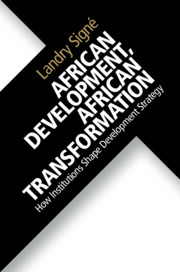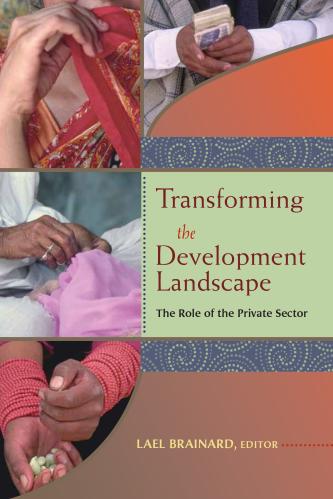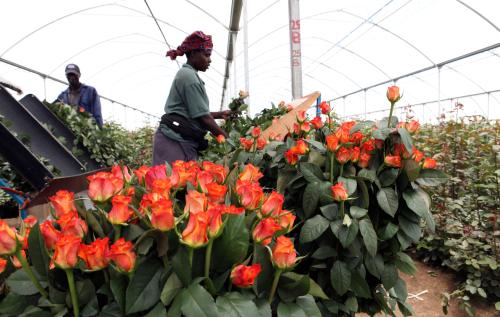Despite African countries’ robust economic growth since the early 2000s (albeit with a brief slowdown in the 2010s that mostly affected resource-rich countries), job creation during this period was weak and has not kept up with the rapidly expanding working-age population. During 2000-2014, average employment elasticity in African countries was 0.41, lower than the ideal of 0.7 that allows for both employment and productivity growth. Employment elasticity measures the responsiveness of employment to value added growth: In short, if the value of employment elasticity is found to be x, it means that a 1 percent growth in value added is associated with x% growth in employment.
Africa needs to create 12 million-15 million jobs annually to absorb youth entering the labor market. However, given the limited job creation, most of Africa’s youth is engaged in low-quality employment in the informal sector. This trend is also evident in the ongoing structural transformation process in Africa where employment has moved from agriculture to mostly informal low-productivity services, bypassing manufacturing, which was key to East Asia’s structural transformation. In fact, Africa’s manufacturing output has stagnated at around 10 percent of GDP since the 1970s; the employment share in manufacturing is even lower.
In response to this challenge, the Africa Growth Initiative and UNU-WIDER have undertaken research that finds that “industries without smokestacks”—sectors that share key firm characteristics with manufacturing, such as being tradable, employing low and moderately skilled labor, having higher-than-average value added per worker, exhibiting capacity for technological change and productivity growth, and displaying evidence of agglomeration economies—can serve as a strong alternative to manufacturing in boosting growth and creating good jobs. Newfarmer, Page, and Tarp (2018) identify agro-industry, horticulture, tourism, business services, transit trade, and some information and communications technology (ICT)-based services as these industries without smokestacks.
To further assess the employment potential of these industries, the Africa Growth Initiative has initiated a new multi-year research project to estimate the job creation potential of industries without smokestacks (IWOSS) in Africa. The first framework conducts a comparative assessment of the employment elasticities for IWOSS and other sectors in the economy. Framework 2 (forthcoming) presents a methodology to identify constraints to growth in industries without smokestacks. Framework 3 (forthcoming) presents a methodological framework to identify the employment creation potential of industries without smokestacks and the skills required for individuals to be absorbed in these sectors.
In this paper, we examine the potential of tourism, transport and telecom (T-T), agro-industry, and horticulture sectors to create jobs. Notably, we find that tourism and T-T are growing in Africa with value added, employment, and labor productivity all increasing. For the median African country in our sample, T-T’s share of value added in GDP has increased from 6 percent in 2000 to over 10 percent in 2015. Median labor productivity in both sectors in higher than the economy-wide average.
Analyzing export data, we find that Africa’s share of global horticulture exports has increased from 10 to 12 percent between 2000 and 2017. The cut flower industry is growing rapidly with exports more than doubling from $300 million to $800 million over the same time period, increasing Africa’s share of global flower exports from 7 to 12 percent. Similarly, agro-industry exports have grown from $24 billion in 2000 to $37 billion in 2017.
However, due to data limitations, we only estimate elasticities for tourism, T-T, and agro-industry. We use a cross-country model first introduced by Kapsos (2005) for our estimation. Aggregated at the country level, industries without smokestacks in Africa have an estimated average employment elasticity of 0.9 (Figure 1). This elasticity is higher than the average elasticity for both the overall economy and manufacturing, highlighting the sector’s potential to create jobs. More specifically, when looking at sector-level results, we find that both tourism and T-T have elasticities of 0.7 in Africa. Results also indicate that industries without smokestacks are also more labor intensive in Africa compared to other regions.
These results highlight the potential for industries without smokestacks to play the same role in Africa’s structural transformation as manufacturing did for East Asia. Ongoing country case studies being undertaken by Brookings’ Africa Growth Initiative in collaboration with think tank partners across several African countries will assess the constraints to growth of industries without smokestacks, estimate the number of jobs these sectors can create over the next 10 years, and evaluate potential skills gaps in the youth population to make them more employable in these sectors.
For more on the Brookings Africa Growth Initiative’s Youth Unemployment in Industries without Smokestacks project, read the summaries of Workshop 1 and Workshop 2, as well as John Page’s 2019 Foresight Africa essay, “How industries without smokestacks can address Africa’s youth unemployment crisis.”











Commentary
Job creation for youth in Africa: Assessing the employment intensity of industries without smokestacks
December 16, 2019